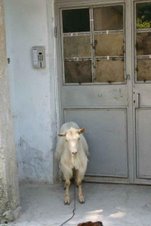Romania - Transylvania (Ardeal)
Transylvania, or Ardeal as it is also called, is an old Romanian province inhabited by the Romanians starting with the first centuries of our era. During the Middle Ages the Romanian majority population fought for national identity and at the same time different ethnic communities joined them. Nowadays the mixture of peoples is of an outstanding variety. Many important events for the modern Romania took place here. I want to mention Michael the Brave’s success in uniting the three Romanian principalities in 1599 and the Great Union. Today according to the 2002 census 7.2 million people live here and the local economy is the most developed in the country.
After a general introduction about Ardeal I considered to be of interest a presentation of three towns – Sibiu, Sighişoara and Alba Iulia - that can give the reader an idea about how this region really is. I have to mention here the contribution to the development of Transylvania of the German and Hungarian settlers who came here centuries ago.
Sibiu is situated near the geographical center of Romania. The city was founded in 1190 by German settlers, near an ancient Roman settlement. The museums such as Astra or Brukenthal Museum and the wonderfully preserved medieval fortifications and churches recommend it as a tourist destination for those who enjoy discovering the past. In 2007 it proudly welcomes visitors and artists from all over the world as the European Capital of Culture.
Sighişoara is the oldest inhabited citadel in Europe. Its German founders took great care of this fortress that was situated on important commercial routes and transformed it into a marvel of military defense. The medieval festival held here each year in July comes as a natural continuation of its historic past. The Clock Tower and the Museum of History hosted here or the house where Vlad the Impaler (Vlad Tepes) was born attract visitors who have a first hand experience in a medieval town.
Alba Iulia is considered by many to be the spiritual capital of Romania. On the 1st of December 1918 the representatives of all the Romanians gathered here and decided to bring together in a single state the historic principalities of Transylvania, Moldavia and Walachia. Not only then it proved its importance but also in 1599 when Michael the Brave made it his capital. Built on Roman ruins, in the Middle Ages it played an important role in the history of Transylvania, being the capital of the region between 1541-1690. The churches and the historic places make Alba Iulia an enjoyable tourist attraction.
I am sure my paper can provide the reader with a clear view about Transylvania and its past and present. A region of the present day Romania, full of the marks of the past, it fully proves its European vocation as part of a proud nation and country.







No comments:
Post a Comment